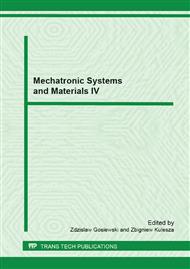p.200
p.206
p.220
p.226
p.232
p.238
p.243
p.248
p.254
Preliminary UAV Autopilot Integration and In-Flight Testing
Abstract:
The paper presents integration process of commercial autopilot. The autopilot was integrated with a fixed wing airframe. The main aim of this work was an experimental study of the autopilot integrated with a micro aircraft. A few manual and autonomous mode flights were performed. During the field trials the autopilot PID parameters were tuned and, as a result, the process of PID gains selection was described. Selected PID gains were presented. Certain telemetry parameters such as longitudinal and lateral position of aircraft, orientation angles, and angular velocities were logged during flight and analyzed. Maximum and minimum airspeeds at a desired altitude were measured and presented. Moreover, Received Signal Strange Indicator between ground station and UAV equipped with special antenna was measured and logged for radio communication quality and range checking. Presented analysis of the autopilots work and obtained results were used to assess the applicability of this hardware to next formation flight operations.
Info:
Periodical:
Pages:
232-237
Citation:
Online since:
March 2013
Authors:
Price:
Сopyright:
© 2013 Trans Tech Publications Ltd. All Rights Reserved
Share:
Citation:


